If you're of the belief that winter marks the end of beauty and interest in your garden then prepare to be delighted.
You may also like
- Gardens to visit to see spectacular snowdrop displays
- Hellebores – what to know and which to grow
- Eco-friendly plant protection for winter gardens
Winter is often associated with dying-back foliage and bare trees and shrubs, but it absolutely doesn't need to be that way. There are winter-flowering plants and winter flowers that can bring you joy even in the depths of winter, as well as a few sprigs for your Christmas wreath, offering are a key way of getting your colour fix during the dark and cold months of the year.
We asked plant experts Keith Wiley, Tom Brown, John Hoyland and Andy McIndoe to choose the winter flowering plants they particularly love and recommend, so you can pick which winter flowers you should be making space for in your garden. These will bravely battle the elements to offer you seasonal interest, and look excellent in contrast to many of the greens and browns that tend to dominate the rest of the garden at this time of year. Many of these selections are perennial winter flowering plants, so once planted and established they will return year on year in your garden.
You can also check out more ideas for winter planting with our guides to plants for winter colour. Or take a look at our guide to the best indoor Christmas plants.
For all our festive content head to our Christmas hub.
Winter flowering plants: the best for your garden
Camellia sasanqua ‘Crimson King’
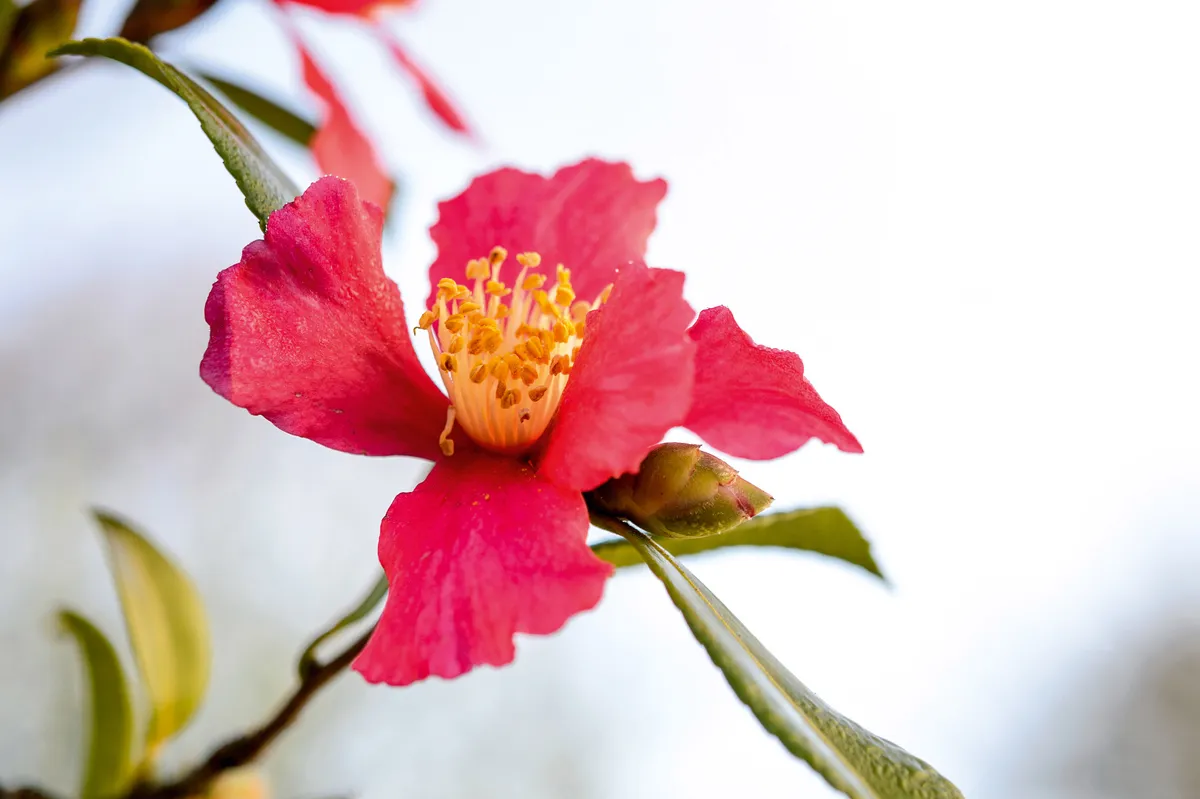
A winter flowering species of camellia that always brings me a tremendous amount of joy. Flowering well before the thrust of camellia blooms appear, its single, crimson-red flowers have a simplicity that also lends itself to many different planting styles and schemes. It’s a large shrub that benefits from a sheltered position, and if your garden is in an exposed and colder climate, try growing this plant in a container, but if you do make sure that it doesn’t dry out during the summer for a strong flowering performance. AGM. Height 2.5-4m. Origin Garden origin (species from Japan). Conditions Moisture-retentive, acidic, fertile and free-draining soil; partial shade. Hardiness RHS H4, USDA 8a-9b. Season of interest Autumn and winter.
Recommended by Tom Brown
Iris unguicularis 'Mary Barnard'

I’m always amazed at how tolerant of incredibly poor and sun-baked positions this species of iris can be. Often, they hug walls and enjoy a roasting during the summer and then reward us in winter with large, violet flowers that have contrasting yellow signals. Flowering in winter isn’t without its challenges, but by planting against a sunny wall, you reduce the impact of the hard frosts, which can damage the freshly emerged flowers. If flowers are hit by the frost, many more soon appear. AGM. Height 50cm.
Origin Garden origin (species from eastern Mediterranean and North Africa).
Conditions Free-draining soil; a sheltered position in full sun. Hardiness RHS H5.
Season of interest December – February. Recommended by Tom Brown
Helleborus x ballardiae HGC Snow Dance (= ‘Coseh 800’)
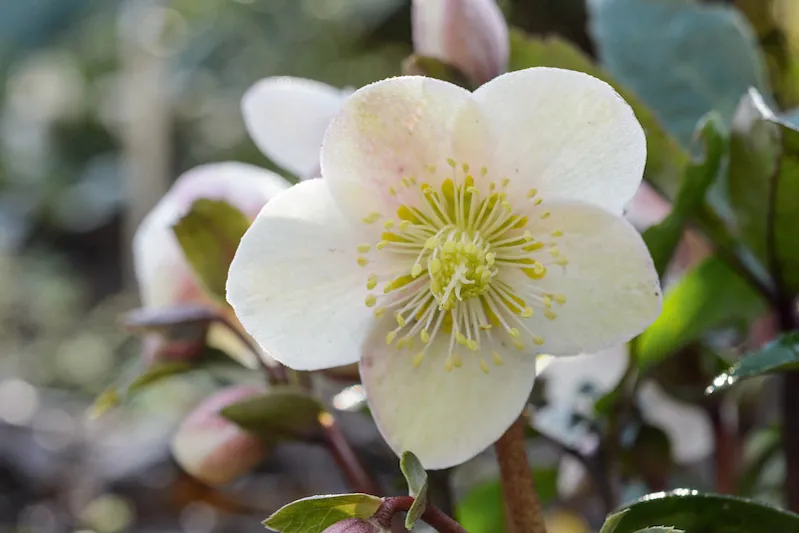
Named after the hellebore breeder Helen Ballard, this is a very exciting group of hellebores noted for their early, large and more upturned, showy flowers. They’re a cross between Helleborus niger and Helleborus lividus, both of which are worth looking at as winter flowering plants in their own right. Helleborus lividus, which can flower from December until April, is more of a challenge to grow but has exquisite, marbled foliage that makes an attractive contribution to this more robust group of hybrids. Height 50cm. Origin Garden origin. Conditions Well-drained, fertile soil; partial shade. Hardiness RHS H7, USDA 4a-9b. Season of interest Flowering from December until spring. Recommended by Tom Brown
Iris unguicularis ‘Peloponnese Snow’
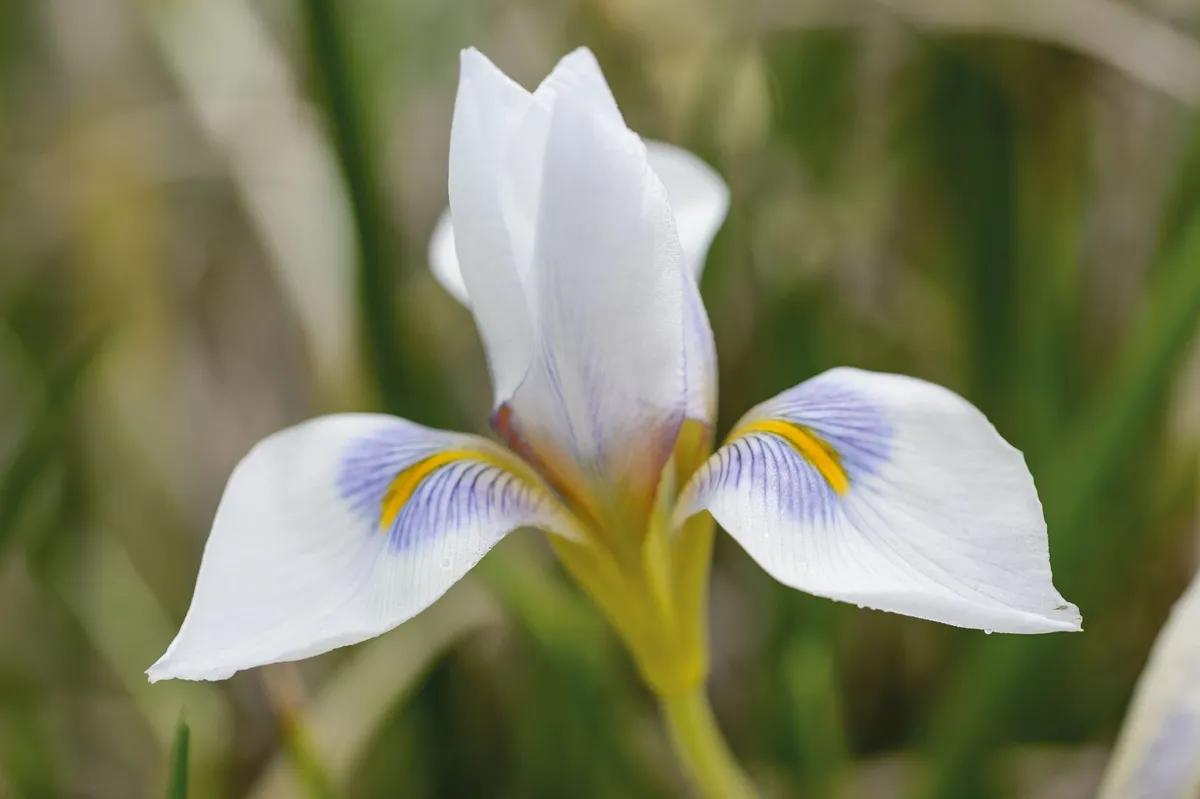
Hardy or near hardy, winter flowering iris are not thick on the ground, and this one is the standout selection of a species that has filled this gap. The more-often seen cultivars are various shades of lilac-blue, which may or may not have much scent and can be reluctant to produce many flowers. By contrast the beautifully marked white flowers of ‘Peloponnese Snow’ are not only strongly scented but are also produced prolifically for several months. Worth watching out for slugs eating the soft flower stems and flowers.
Height 30-45cm. Origin Greece. Conditions Well-drained soil; sun in preferably a sheltered spot. Hardiness RHS H5, USDA 7a-9b. Season of interest Evergreen clump flowering winter through spring. Recommended by Keith Wiley
Corydalis henrikii

Named after Henrik Zetterlund, of Gothenburg Botanical Garden, who has done so much to bring this genus to the attention of gardeners. This winter flowering plant species was found growing on north-facing screes and well-drained limey soils and only named in 1990. Like so many of the genus this one merits close inspection. It will not shout out its presence from its lowly stature, but grow it with the smaller snowdrops, early species crocus and Iris reticulata and a jewel-like tapestry will emerge. A spring ephemeral for a raised bed or rockery retreating below ground soon after flowering. Height 15-20cm in flower. Origin Turkey. Conditions Well-drained soil; sun or shade. Hardiness RHS H6, USDA 5a-8b. Season of interest Late winter to early spring. Recommended by Keith Wiley
Daphne ‘Spring Beauty’
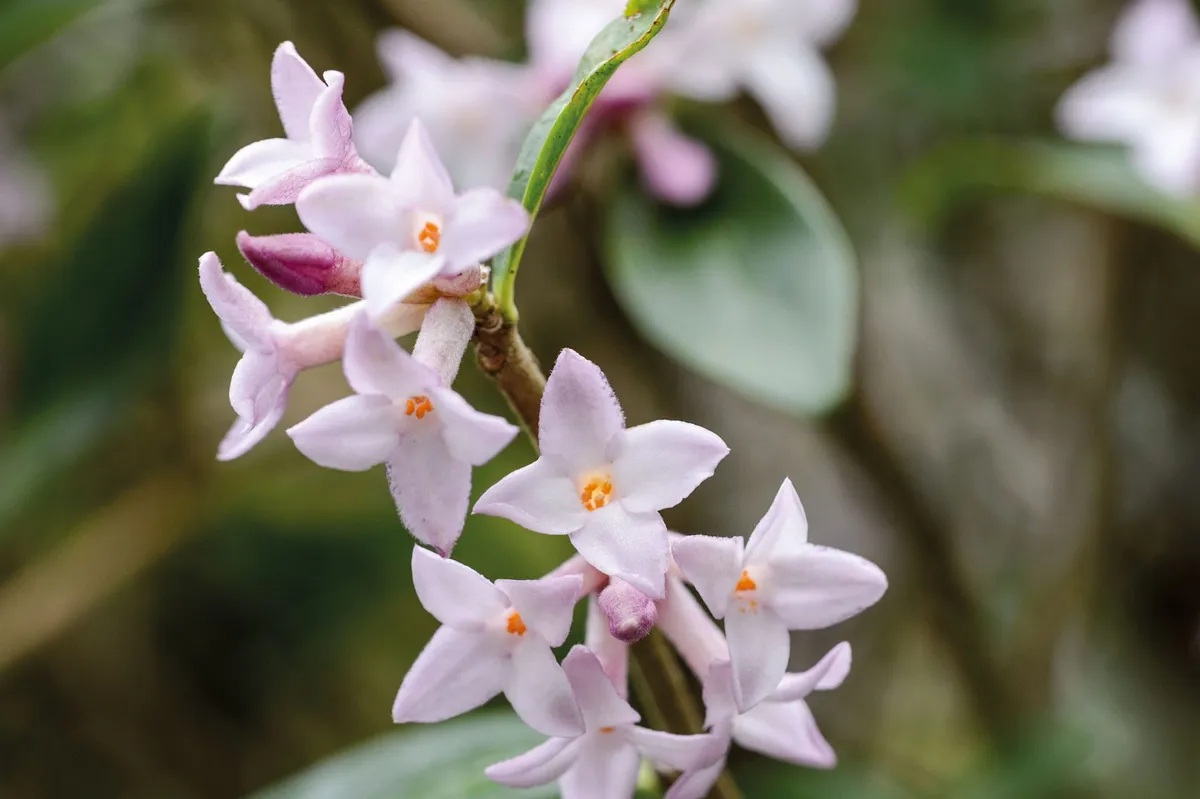
Purely in terms of scent the best species of late winter flowering daphnes are Daphne bholua and Daphne odora. With less fragrance, but greater flower power, this cultivar (bred by Robin White) is a hybrid between Daphne bholua and the supposedly tender Daphne sureil, which ensures it is winter flowering and produces masses of pink flowers. Best planted where the morning sun will not reach it while the plant is still frozen after a cold night. Has proved hardy here at Wildside, which is similar to much of southern England. Height 2m. Origin Garden origin (both parents are Himalayan). Conditions Fertile, well-drained soil; sun or part shade. Hardiness RHS H4, USDA 7a-8b. Season of interest Evergreen shrub flowering late winter to early spring. Recommended by Keith Wiley
Read our feature on the best daphnes to grow.
Crocus thirkeanus
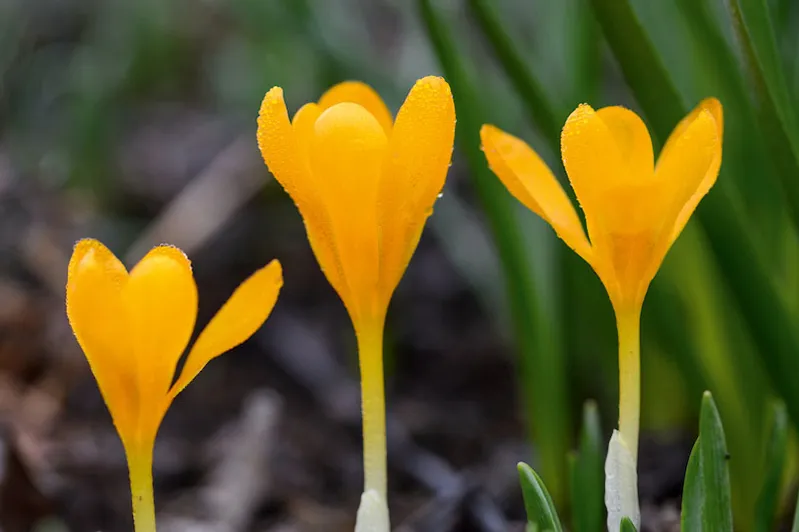
Formerly known as Crocus herbertii, this is wonderful growing alongside Corydalis henrikii and one of my highlights among the winter flowering plants. The most intense orange flowers spring from the smallest crocus bulbs I have ever seen. It is a stoloniferous species spreading by underground stems to produce an ever increasing colony of small, grassy leaves when settled, which in my experience can take several years to happen. Seeing these spears of orange emerge so early in the year is a thrill of which I will never tire. It does need small companions, I grow it with low-growing, early grape hyacinths and some of the smaller snowdrops. Height 10cm. Origin Turkey. Conditions Well-drained soil; sun. Hardiness RHS H7, USDA 3a-8b. Season of interest Late winter. Recommended by Keith Wiley
Read our advice on growing crocus.
Erythronium caucasicum

This species always wins the race to be the first erythronium in flower, but as you might expect from a plant that produces flowers so early, it is easily spoilt by bad weather. Strong winds are this winter flowering plant's main enemy so it is best positioned in a sheltered, semi-shady spot. Given a spell of good weather this species is a joy – a little like a refined Erythronium dens-canis but with superb mottled leaves and yellow, rather than blue, anthers. Very slow to increase with me, seed offering the best option, so grow under cover or protect the plants with a cloche if you want seed. Recommended by Keith Wiley
Daphne bholua ‘Jacqueline Postill’

An evergreen daphne cultivar with leathery, mid-green leaves that is strong growing once established. Large clusters of mauve-pink flowers cover the daphne for weeks from winter into early spring. The plant's fragrance is powerful, sweet and delicious, even on cold days. This daphne was raised at Hillier Nurseries by propagator Alan Postill and named for his wife. Height 1.8m. Origin Western and central Caucasus. Conditions Woodsy soil; part shade. Hardiness RHS H6, USDA 3a-9b. Season of interest Late winter to very early spring. Recommended by Andy McIndoe
Primula ‘Gigha’
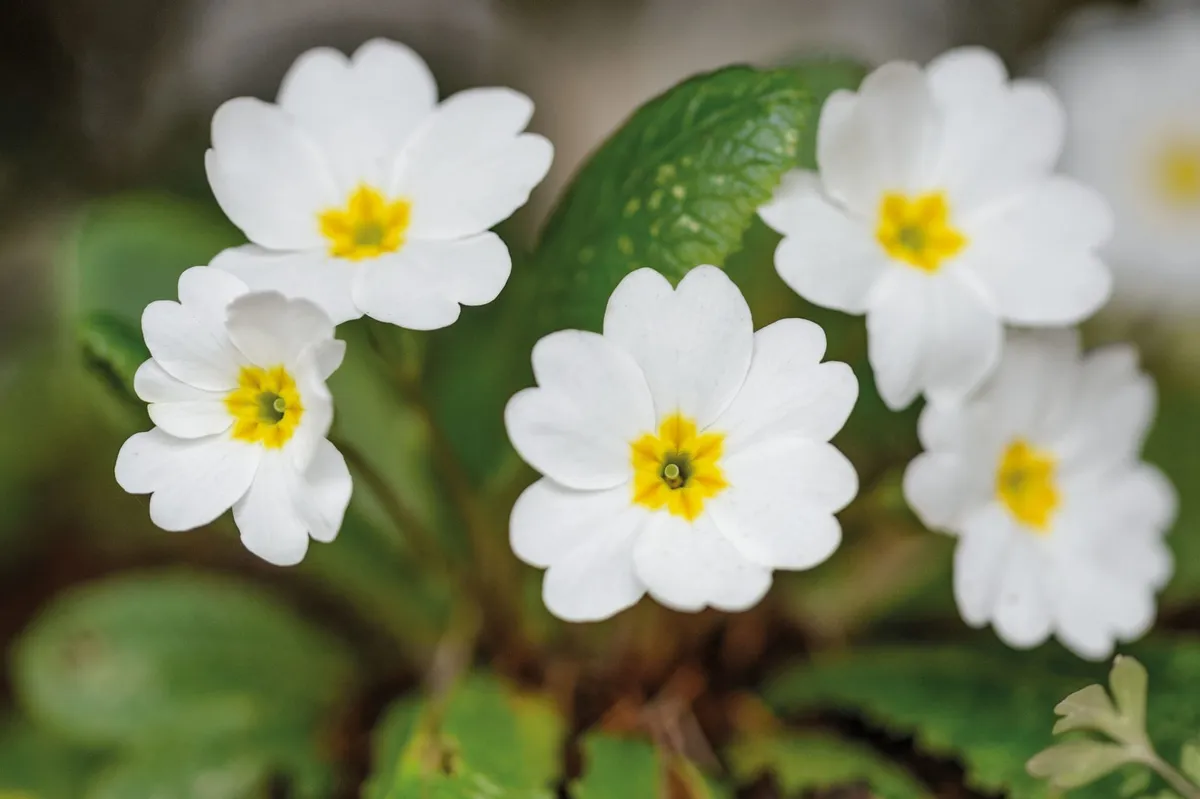
In effect a pure-white primrose with a yellow eye that will flower for months giving pools of white in the woodland garden over winter. My experience with primrose cultivars (I have grown very many over the years) is that quite a few of them fade away without you really realising they have disappeared. One of the joys of ‘Gigha’ is its willingness to stay alive without regular division or undue pampering. It can self-seed but it hasn’t done so with me. Like all woodlanders though it will respond favourably if it is given an annual mulch and fed. Height 15cm. Origin Thought to come from the Isle of Gigha off the coast of Scotland. Conditions Moist but well-drained soil; full sun to part shade. Hardiness RHS H7, USDA 3a-9b. Season of interest Late winter to spring. Recommended by Keith Wiley
Cyclamen coum
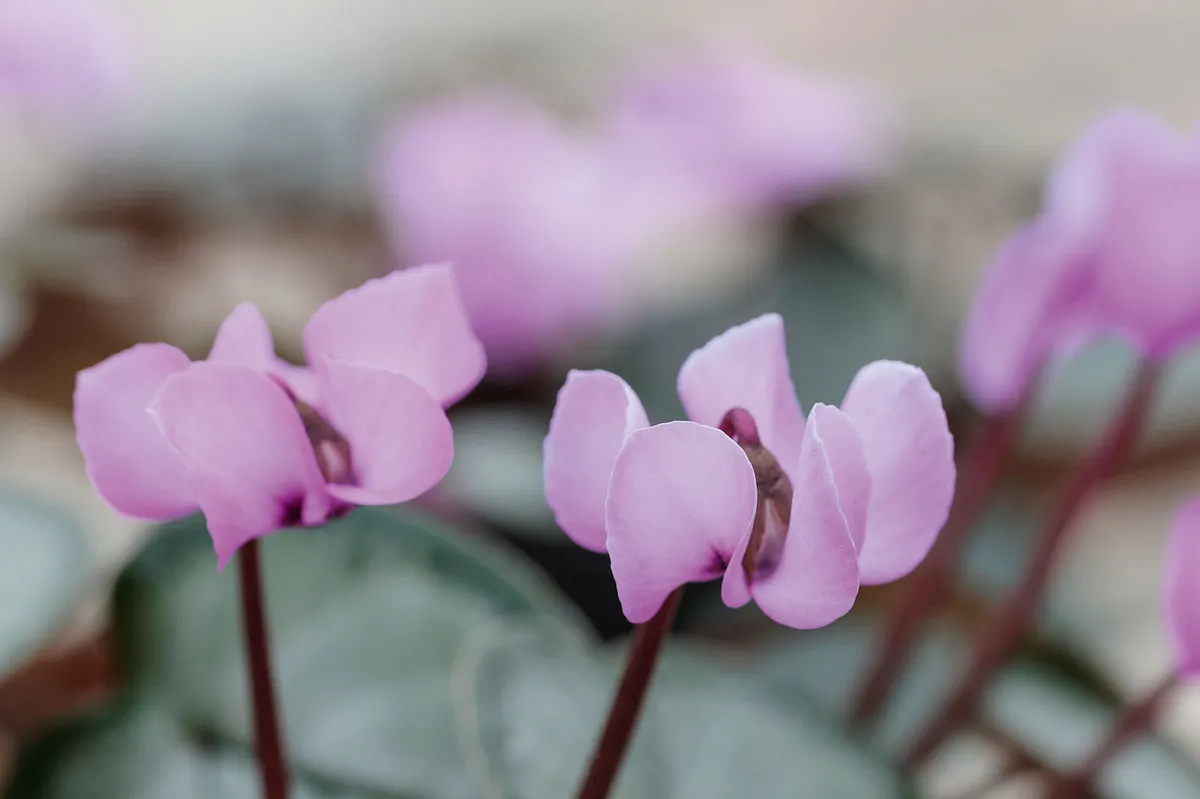
This winter flowering plant is part of a variable group of Cyclamen coum. The best forms have pewter (not silver) leaves that have a thin margin and central midriff of green. The flowers range from pink to deep magenta. Height 10cm. RHS H5. Recommended by John Hoyland
Read our advice on growing cyclamen.
Clematis cirrhosa ‘Jingle Bells’
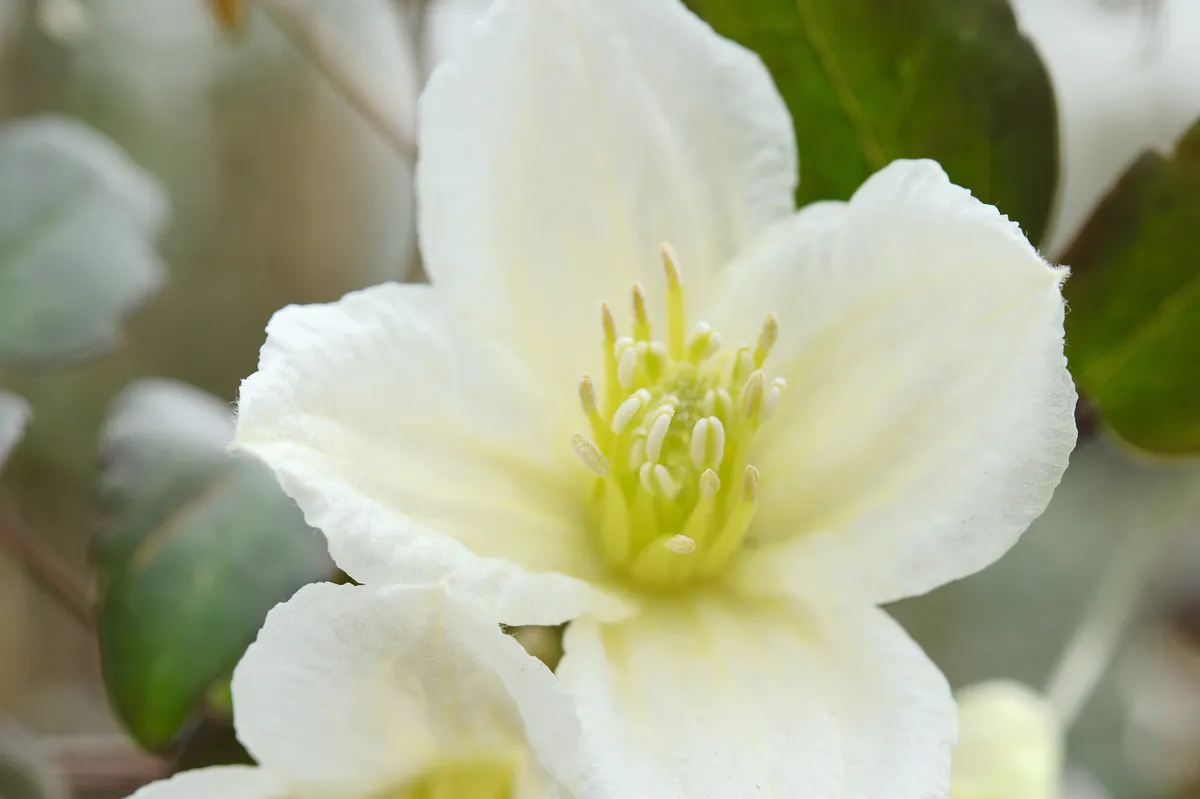
The first winter flowering Clematis cirrhosa cultivar to start flowering, in the autumn. Creamy yellow buds open to flowers that fade from cream to white with age. Reputedly the hardiest winter flowering Clematis cirrhosa, thriving even in cold parts of the North. Recommended by John Hoyland
Discover the best winter-flowering clematis.